NATIONAL MUSEUM OF NATURAL HISTORY
Why Science Needs Art
From teaching curious museumgoers to adding creativity to the scientific process, art is an essential component of the science done at the Smithsonian’s National Museum of Natural History.
/https://tf-cmsv2-smithsonianmag-media.s3.amazonaws.com/blogging/featured/Live_orange-colored_jellyfish_on_a_black_background.jpg)
Art is a powerful tool for telling a scientific story. With many scientific fields dealing with the strangest of the animal kingdom—like creatures with a handful of eyes and bodies so different from our own—art can help us experience these hard-to-imagine parts of the natural world and shed light on new scientific discoveries.
The National Museum of Natural History’s Invertebrate Zoology department relies heavily on artistic imagination to show its often microscopic, sometimes deep ocean-dwelling and always bizarre creatures. From teaching curious museumgoers to adding creativity to the scientific process, art is an essential component of the science in the department and across the museum.
Art Makes Science Education Fun
Artists work alongside scientists on all sorts of projects in the Invertebrate Zoology department.
Alia Payne, an Interactive Arts major at the Maryland Institute College of Art, came to the museum to work with the live jellyfish collections. While taking care of the jellies in the lab, Payne also brought her spineless friends out into the museum and taught visitors about jellyfish biology.
She always got the same question from visitors, “how do jellyfish stings work?” She had the scientific answer for them but found it difficult to explain the microscopic stinging cells that fire like harpoons out of jelly tentacles without a clear visual.
That’s when a lightbulb went off in Payne’s mind. She could show visitors how jellyfish sting using art. Payne immediately got to work in the sculpture shop at her school, excited to bring the microscopic stinging cells into full view.
Payne built a 3D model of one of the stinging cells that line jelly tentacles—called a nematocyst—that visitors could touch and interact with. The model showed visitors a jelly’s stinging power and helped Payne explain how to take care of a jellyfish sting.
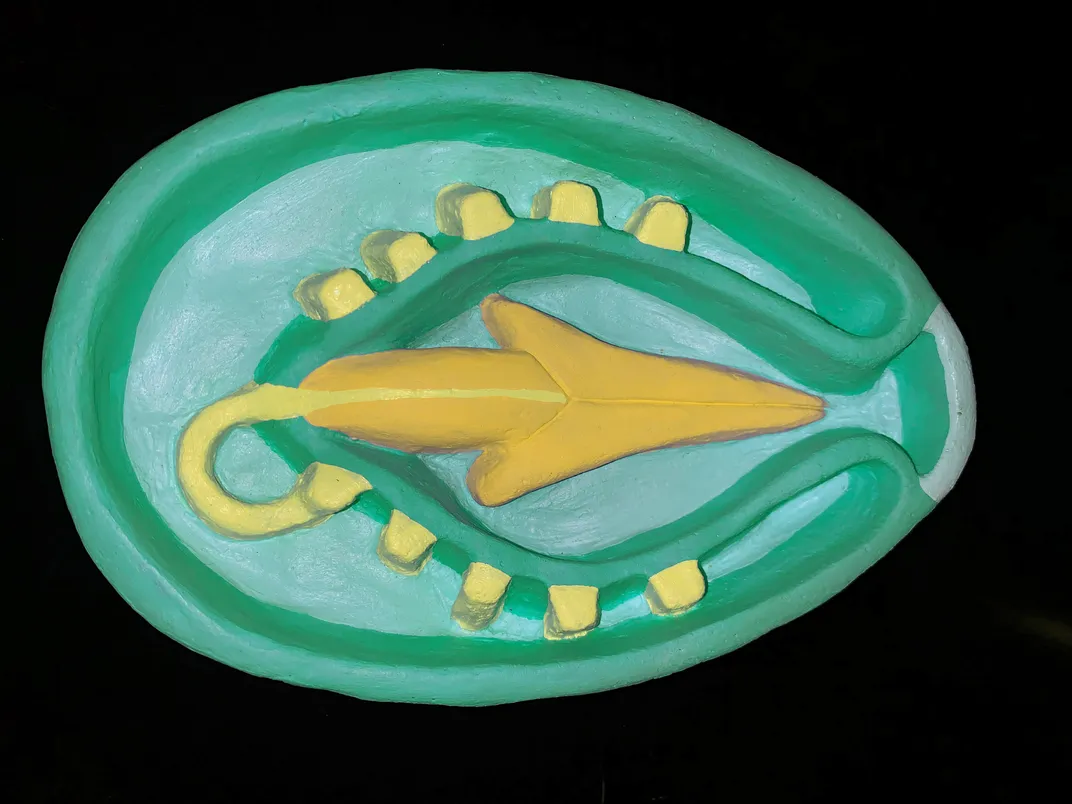
“I’ve always loved art for education,” said Payne. “We learn more easily when we have something to play and interact with.”
Building her 3D model wasn’t the only time Payne used her artistic talents to share science. For World Octopus Day, she drew a cartoon of an octopus escaping from a jar—a task octopuses have been witnessed achieving thanks to their agile, boneless bodies—to teach the museum’s Instagram fans about the creature’s unique biology.
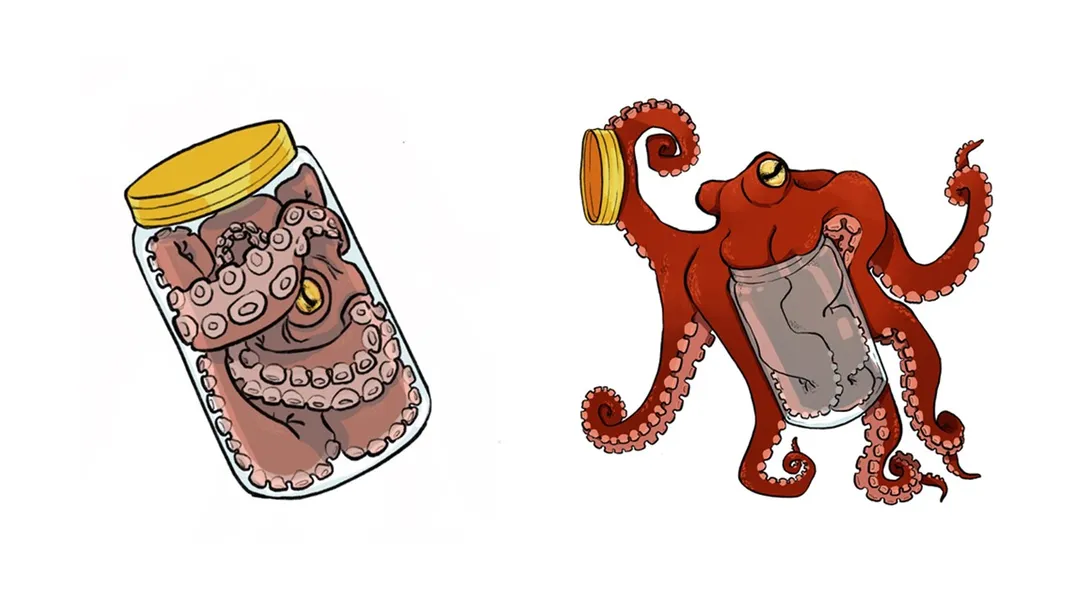
“It’s about bringing an element of play to science,” said Payne. “And creating a space where people of all ages can learn together.”
Art Creates a Window into the Natural World
While art helps society experience science, it also helps scientists understand the natural world.
Dr. Karen Osborn, a curator and invertebrate zoologist at the museum, specializes in the striking creatures of the ocean’s largest habitat—the midwater. Osborn explores this great expanse of open water between the seafloor and the surface to investigate how animals have adapted to this dark, resource-scarce environment. Midwater creatures are equipped with all sorts of unique features to get them through life in their extreme habitat, like the family of tiny crustaceans that have 11 different types of eyes, and Osborn’s research helps us understand how these animals came to be.
The animals Osborn studies are charismatic when seen in the wild. Yet, few people have access to the deep-sea equipment needed to see them firsthand.
“When you want people to value animals that you care about, you’ve got to give them something to go on,” said Osborn. “I wanted to be able to show people what I see in the animals.”
Osborn turned to her artistic talents to show people the elusive, beautiful and bizarre midwater animals.
“So I started learning photography,” Osborn explained. “It was really important because these animals don’t look so great when they’re preserved in a jar in the museum’s collections.”
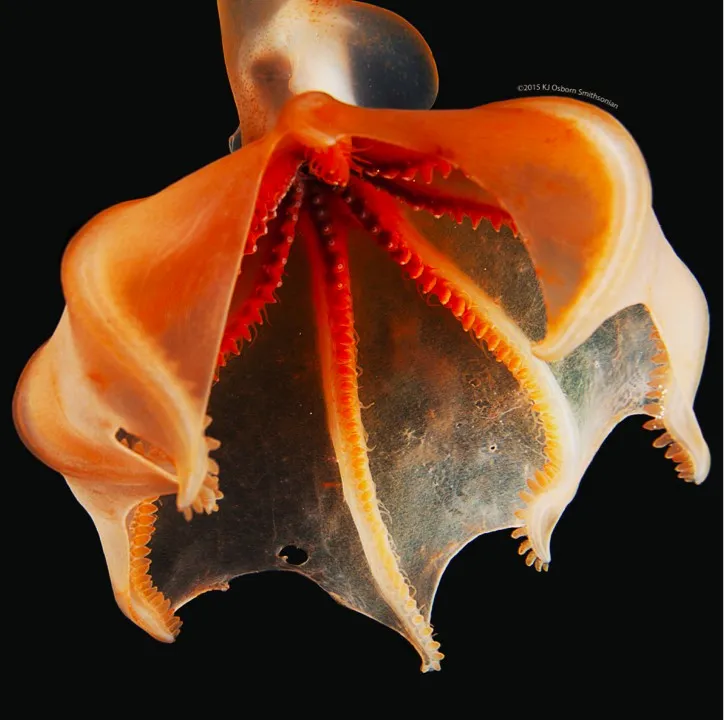
Osborn has also used her artistic mind to help design exhibits for the museum, like the "Life in One Cubic Foot" display which brought the microscopic ocean world to life. Using 3D model plankton and a lot of incredible photography, Osborn recreated the assortment of life found in the midwater to help museum visitors experience this hard to reach area of the ocean.
Art Improves the Scientific Process
Art even influences how scientists do science.
Osborn’s research looks at animal forms—or morphology—to better understand how bodies are structured, how they move and what different body plans can tell us about animal evolution.
Her discoveries apply to fields beyond science, like technology. Right now, Osborn’s team is looking at how a spineless, free-swimming bristle worm called a Tomopteris moves to help the tech industry make better, lighter and more maneuverable robots.
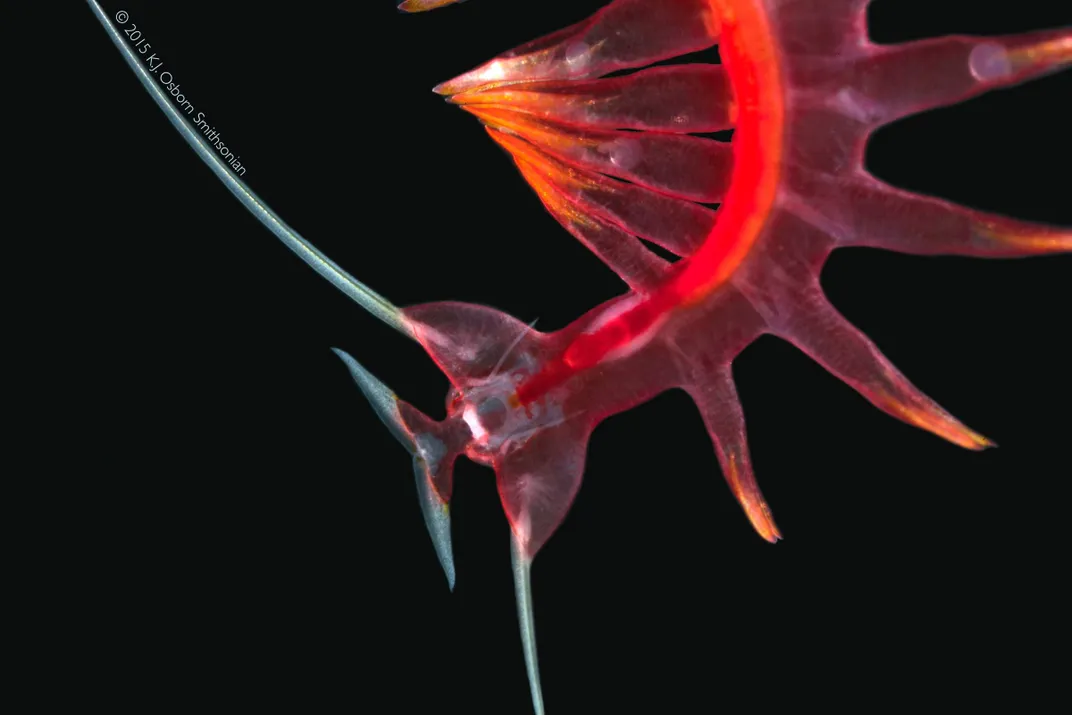
But studying these and other midwater creatures takes a highly trained eye for discerning shapes. “I do illustrations, sketch and photograph the animal to understand its structure,” Osborn explained.
This ability to pay careful attention to patterns, shapes and spatial relationships helps scientists properly observe and discover—key pillars of the scientific process. It also helps them create clear visuals of the collected data. Graphs, figures and scientific illustrations are all more powerful when they have a touch of artistry.
Art Has its Own Field in Science
Many science-minded artists find their way to the field of science illustration, where they help document new scientific discoveries and make the abstract parts of science more explainable.
Late last year, Dr. Allen Collins—a curator and invertebrate zoologist at the museum—and science illustrator, Nick Bezio, worked with a team to describe globs of slime they found leaking from the upside-down jelly, Cassiopea. The balls of slime, the researchers playfully referred to as “mucous grenades,” had a strange ability. They produced the same kind of sting as a jellyfish tentacle.
The slime, the team termed a cassiosome, is thought to be responsible for the stings people experience when swimming by upside-down jellies in the ocean. By diving into the anatomy of the mucous grenade, the researchers were able to see how it could sting without a body of its own.
Typically, the researchers would have used photos to document the new structure, but they weren’t able to get the full picture of the cassiosome after trying a variety of microscopic photography methods. That’s when Bezio’s role as an illustrator became crucial.
“I was able to create a central image that shows what you’re looking at - this weird tumor-like blob with hair,” joked Bezio.
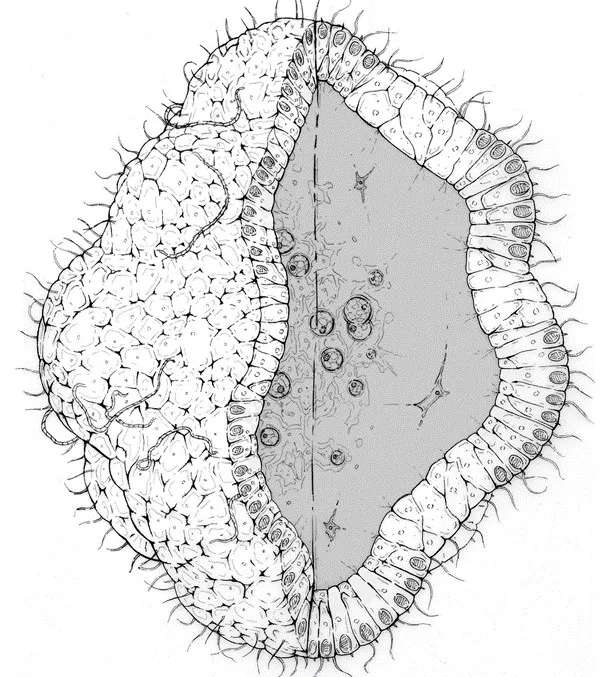
He went through several iterations of the drawing with the team, eventually landing on the depiction which shows the inner and outer layers of the cassiosome. Bezio was inspired by other science illustrators who made similar images to depict the different layers of the Earth’s crust.
Telling a Scientific Story
Without art, the unique ocean invertebrates studied at the museum would be hidden in the collections. Artistic creativity provides an opportunity to show off the bright colors, captivating body plans and cool adaptations of these creatures to the museum’s scientists, visitors and the world.
In turn, art connects scientists to their own creativity and aids in their scientific process and the communication of their discoveries. By weaving together science with imagination and storytelling, art helps highlight the beauty of the ocean’s invertebrates—even those fit for horror movies—and connects people to their innate curiosity for the strangeness of the animal kingdom.
Related stories:
Digitization Allows Public Access to Smithsonian’s Hidden Collections
How Elaborate Cakes Make Science Sweet
Check out the Winning Photos From the 2018 Nature’s Best Photography Awards
Can Technology Bring the Deep-sea to You?

